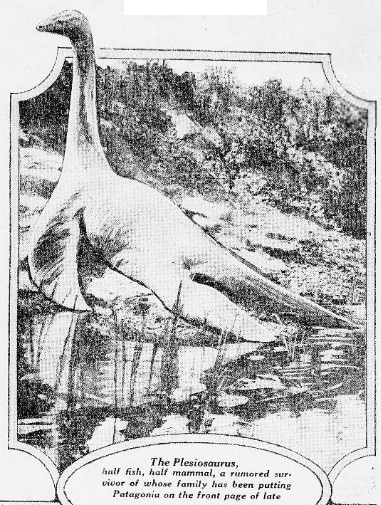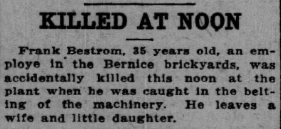
Growing up, absolutely loving cryptozoology, I never knew that old newspapers would be a great source for researching hunts for creatures like the plesiosaurus.

Expects to Lasso Plesiosaurus And Lead It to Argentine Zoo
Field Museum Scientist, Off for Lair of Survivor of Prehistoric Days, Hopes to Locate It
Buenos Ayres, Dec. 22 (Associated Press). — Before Prof. Elmer S. Riggs, a Chicago paleontologist, sailed for Patagonia today, on a fossil hunting expedition for the Field Museum, he was informed by Prof. Clemente Onelli, Director of the Buenos Ayres Zoological Garden, that reports of a plesiosaurus were still being received from the territory of Chubut, despite the failure of a group of Argentine scientists to find the prehistoric creature last spring.
“If I meet that plesiosaurus,” said Prof. Riggs to Prof. Onelli, “I’ll put a lariat around his neck and lead him direct to the Buenos Ayres Zoo.”
The Chicagoan visited the Argentine paleontologist and heard from him the story of Patagonia’s monster, listening with interest to the account of the unsuccessful search of the Andean Lake region where the creature was supposed to have been seen. Prof. Riggs said that the data was very interesting, but that it could not tempt him from his fossil hunt.
Prof. Onelli explained that the name plesiosaurus was a misnomer and that the creature he still believed alive in the Patagonian wilds is probably a survivor of the race of giant sloths.
Prof. Riggs and his companions will sail to Rio Gallegos, from which place they will proceed northward on horseback to search along the coast of the territory of Santa Cruz for fossils of the Miocene period which are known to exist there. Prof. Riggs said he expected to find the small fossilized ancestors of the glyptodon, which reached a gigantic size in the Pleistocene period.
The expedition will probably remain in that region during the entire southern summer, and will then proceed northward and into the interior in a search for Pleistocene specimens. The scientists plan to remain in Argentina for a year and a half.
Source: The Evening World (New York City, NY newspaper). December 22, 1922.

